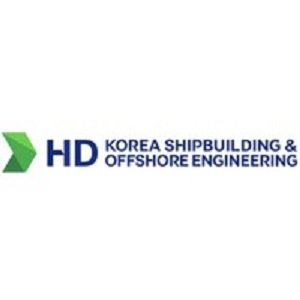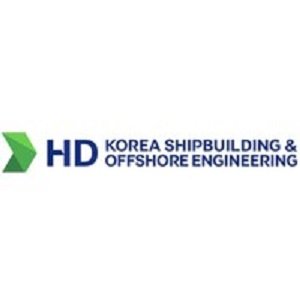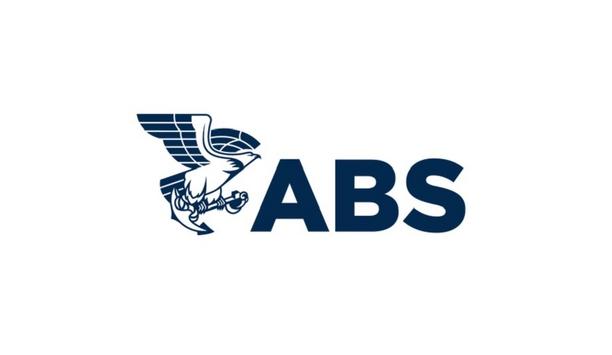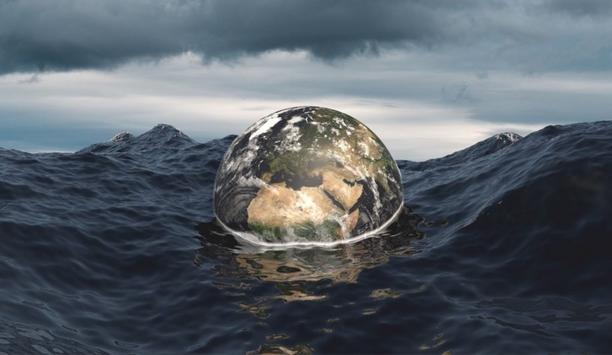Korea Shipbuilding & Offshore Engineering Co., Ltd. (KSOE) - Experts & Thought Leaders
Latest Korea Shipbuilding & Offshore Engineering Co., Ltd. (KSOE) news & announcements
ABS awarded approval in principle (AIP) to HD Korea Shipbuilding and Offshore Engineering (HD KSOE) for its design of an advanced cargo handling system for very large ethane carriers (VLECs). The design consists of a refrigerant-based reliquefication system and an ethane fuel supply system installed on the ship. ABS completed design reviews HD KSOE says the design, once developed, will help customers reduce operating costs HD KSOE says the design, once developed, will help customers reduce operating costs. ABS completed design reviews in accordance with the ABS Rules for Building and Classing Marine Vessels. “Transporting ethane requires advanced technology to maintain stable temperature and pressure. ABS is proud to use our industry-pioneering expertise in gas carriers to support forward-thinking clients like HD KSOE and their next-generation vessel designs,” said Patrick Ryan, ABS Senior Vice President and Chief Technology Officer. Certification of innovative systems Young-Jun Nam, CEO of SD Business Unit at HD KSOE, said: “The completion of the development of a competitive ethane cargo handling system for VLECs is significant as it adds to our eco-friendly equipment value chain. In line with the market's transition to eco-friendly solutions, we will continue to develop various cargo handling systems to further strengthen our competitiveness.” In 2024, ABS and HD KSOE signed a memorandum of understanding to enhance their collaboration on cutting-edge technologies, including the development and certification of innovative systems for next-generation vessels.
In a major push toward decarbonising maritime logistics, President Jae-young Byeon of the Ulsan Port Authority (UPA) and Chief Executive Sun-bae Hong of the Korea Maritime Cooperation Centre (KMC) jointly announced the successful conclusion of the “2nd Forum on the Commercialisation of Biofuels for Maritime Vessels,” held on 23 April at the Caradium Hall of the PJ Hotel in Seoul. The forum, hosted by the Ministry of Oceans and Fisheries and co-organised by UPA and KMC, drew around 300 key stakeholders from across the shipping, energy, terminal, shipbuilding, and finance sectors. Marine biofuel supply chain The event underscored the increasing urgency of eco-friendly fuel adoption, following the IMO's approval The event underscored the increasing urgency of eco-friendly fuel adoption, following the International Maritime Organization (IMO)'s approval of mid-term greenhouse gas reduction measures. Positioning Ulsan Port as a pioneering biofuel supply hub in Northeast Asia was central to the agenda. UPA, Korea’s foremost port operator for energy and petrochemical logistics, emphasised its strategic role in building a stable marine biofuel supply chain aligned with tightening global regulations. UPA's commitment During the second session, UPA's Director Byeong-gu Kim unveiled comprehensive plans to promote marine biofuel adoption centred on Ulsan Port, highlighting the port's strategic advantages, including its world-class petrochemical infrastructure, extensive storage facilities, and specialised handling expertise. The presentation showcased UPA's commitment to developing the necessary facilities and operational frameworks to become Northeast Asia's premier biofuel bunkering destination. IMO environmental regulations The presentation showcased UPA's duty to developing the necessary facilities and operational frameworks "As IMO environmental regulations intensify, Ulsan Port Authority is strategically positioned to lead the transition to alternative fuels," stated UPA President Jae-young Byeon. "Marine biofuels represent a practical alternative that can be implemented immediately without requiring new vessel construction or retrofitting. UPA will continue to strengthen port-centred biofuel supply networks and create a competitive eco-friendly marine fuel market through our advanced infrastructure and technical expertise." Climate-friendly economic transition Chief Executive of the Korea Maritime Cooperation Centre (KMC), Hong Sun-bae, emphasised that "the strategic partnership between the shipping industry and the logistics sector has become more important than ever in this era of climate-friendly economic transition." During his address, Director Hong stressed, "We will continuously facilitate industry dialogue forums like this meeting to strengthen the competitiveness of the domestic shipping industry as international regulations approach, creating opportunities for growth." Key players in the maritime and energy sectors Expert sessions featured actionable insights and market intelligence from key players in the maritime and energy sectors: Key outcomes from the 83rd Marine Environment Protection Committee (MEPC83) by Team Pioneer Dae-jung Hwang of KMC Biofuel utilisation and demonstration cases by Manager Dae-sik Seo of HMM Current usage status and challenges of B100 biofuel by Manager Min-guk Jang of G-Marine Service Market outlook for marine biofuels by Chief Surveyor Jae-hoon Lim of DNV Case studies of biofuel applications for marine engines by Team Pioneer Jae-yup Seo of HD Korea Shipbuilding & Offshore Engineering Global marine biofuel market trends and bunkering developments by Senior Manager Yul-kyung Hong of Hyundai Fuels The forum concluded with a dynamic panel discussion where UPA outlined its roadmap for transforming Ulsan Port into the region’s leading biofuel supply centre, backed by strategic investments and cross-sector partnerships.
ABS, in collaboration with pioneering players in the maritime industry, has joined an ambitious initiative from the Massachusetts Institute of Technology (MIT) to tackle challenges facing global shipping. The MIT Maritime Consortium unites academia and industry to support the development of cutting-edge technologies that aim to transform the sector, including alternative fuel and new nuclear technologies, data-powered strategies for efficient operations and decision making, autonomy and cybersecurity, as well as on-board manufacturing of spare parts. Innovation members Innovation Members are Foresight-Group, Navios Maritime Partners, L.P., Singapore Maritime Institute ABS, Capital Clean Energy Carriers Corp., and HD Korea Shipbuilding & Offshore Engineering are the Maritime Consortium’s Founding Members. Innovation Members are Foresight-Group, Navios Maritime Partners, L.P., Singapore Maritime Institute, and Dorian LPG. “This consortium brings a powerful collection of significant companies that, together, has the potential to be a global shipping shaper in itself,” says Christopher J. Wiernicki, ABS Chairman and CEO. Development of the novel technology Wiernicki added: “The members are all world-class organisations and real difference makers. The ability to harness their experience and know-how, along with MIT’s technology reach creates real jet fuel to drive progress." "As well as researching key barriers, bottlenecks and knowledge gaps in the emissions challenge, the consortium looks to enable development of the novel technology and policy innovation that will be key. Long term, the consortium hopes to provide the gravity we will need to bend the curve to reach emissions objectives.” Key areas for commercial shipping Collaborators will research new designs and methods that enhance efficiency and reduce emissions “This is a timely collaboration with key stakeholders from the maritime industry with a very bold and interdisciplinary research agenda that will establish new technologies and evidence-based standards,” says Themis Sapsis, the William Koch Professor of Marine Technology and the director of MIT’s Centre for Ocean Engineering. “It aims to bring the best from MIT in key areas for commercial shipping, such as nuclear technology for commercial settings, autonomous operation and AI methods, improved hydrodynamics and ship design, cybersecurity and manufacturing.” Data analysis and computation techniques The consortium will launch multiple research projects designed to tackle challenges from a variety of angles, all united by cutting-edge data analysis and computation techniques. Collaborators will research new designs and methods that improve efficiency and reduce greenhouse gas emissions, explore the feasibility of alternative fuels, and advance data-driven decision making, manufacturing and materials, hydrodynamic performance, and cybersecurity.
Insights & Opinions from thought leaders at Korea Shipbuilding & Offshore Engineering Co., Ltd. (KSOE)
Ammonia is gaining traction as a future fuel in the maritime industry, primarily due to its potential to significantly reduce greenhouse gas emissions. A key driver for ammonia's interest is that it can be carbon-free when combusted, which aligns with the maritime industry's increasing pressure to meet emissions regulations. However, most ammonia production currently relies on fossil fuels. Transitioning to "green ammonia" production is crucial for sustainability. If "green ammonia" is produced using renewable energy sources, it offers a pathway to near-zero emissions shipping. Safety measures and regulations Ammonia’s volumetric energy density – higher than hydrogen – makes it more practical for onboard storage. However, ammonia is toxic, which requires stringent safety measures and regulations for handling and storage. The combustion of ammonia can produce nitrous oxide (N2O), a potent greenhouse gas. Therefore, mitigation technologies are needed. Building the necessary infrastructure for ammonia bunkering and supply will be a significant undertaking. Developing guidelines for safe use Ammonia is poised to play a significant role in the maritime industry's transition to a future The International Maritime Organization (IMO) is developing guidelines for the safe use of ammonia as a marine fuel. Increasing numbers of companies are investing in the development of ammonia-fueled vessels and technologies. European Union (EU) legislation, such as the EU Emissions Trading System (ETS) and the FuelEU initiative to support decarbonisation, are pushing the maritime industry towards the use of alternative fuels, which is increasing the potential of ammonia. While challenges remain, ammonia is poised to play a significant role in the maritime industry's transition to a more sustainable future. Ongoing research and development Ongoing research and development are focused on improving safety, reducing emissions, and scaling up production. In essence, ammonia offers a promising pathway for the maritime industry to reduce its carbon footprint, but its widespread adoption depends on overcoming technical and logistical challenges. Working toward the future of ammonia Progress is already happening as the maritime industry works toward a future that includes the use of ammonia as a fuel. For example, one project underway aims to be a pioneer in establishing a comprehensive and competitive supply chain to provide clean ammonia ship-to-ship bunkering in the U.S. West Coast. Progress is already occurring as the maritime industry works toward a future A feasibility study is being conducted at the Port of Oakland, Benicia, and nearby major ports on the U.S. West Coast. A Memorandum of Understanding (MOU) between American Bureau of Shipping, CALAMCO, Fleet Management Limited, Sumitomo Corp. and TOTE Services LLC is jointly conducting the feasibility study. "We are proud to share our industry-pioneering expertise in ammonia as a marine fuel to support this study on the U.S. West Coast,” said Panos Koutsourakis, Vice President of Global Sustainability at the American Bureau of Shipping. “Our expertise in developing safety guidelines will support the consortium to address the ammonia-specific set of safety and technology challenges.” More global ammonia developments In another development, three LPG/ammonia carrier ships have been ordered at the South Korean shipyard HD Hyundai Heavy Industries (HD HHI). Danish investment fund European Maritime Finance (EMF) and international shipping company Atlas Maritime have confirmed the order. HD HHI’s parent company, HD Korea Shipbuilding & Offshore Engineering (HD KSOE), revealed the order for $372 million in March 2024. The three 88,000 cubic-metre LPG dual-fuel carriers, capable of carrying and running on ammonia, are scheduled for delivery in December 2027. The vessels will be named EMF Viking I, II, and III. Also, Lloyd’s Register (LR) and Guangzhou Shipyard International have signed a joint development project to design the world’s largest very large ammonia carrier (VLAC). The design of the 100,000-cubic-metre vessel has been assessed in line with LR’s Structural Design Assessment and prescriptive analysis. The gas carrier will have an independent IMO Type B tank for safe carriage of the chemical. Zero-emissions operations The cargo ship, which will be 7,800 dwt, is designed to transport timber from Norway to Europe “As major economies look to co-fire ammonia in their coal power stations to reduce the CO2 footprint of their national energy mix, shipping will play a key role in distributing clean hydrogen-based commodities such as ammonia, thereby supporting nations to meet their Paris Agreement commitments," says LR's Chief Executive Nick Brown. Furthermore, a partnership of companies from Norway has ordered a pioneering short-sea cargo ship that will advance the industry’s ability to provide zero-emissions operations. The cargo ship, which will be 7,800 dwt, is designed to transport timber from Norway to Europe and will be the first to operate on ammonia and electricity. Amogy’s ammonia-to-electrical power system A start-up company focusing on ammonia-to-power technology, Amogy, demonstrated the first tugboat powered by its cracking technology just short of the fourth anniversary of the company’s launch. The trip of a 67-year-old tug along a tributary of New York State’s Hudson River is part of the company’s works to develop and commercialise its technology to decarbonise the most difficult industries. Amogy’s ammonia-to-electrical power system splits, or “cracks,” liquid ammonia into its base elements of hydrogen and nitrogen. The hydrogen is then funnelled into a fuel cell, generating the power for the vessel. Research points to the risks of ammonia The chemical, made of hydrogen and nitrogen, can also be burned as a zero-carbon fuel Today and in the future, ammonia, a main component of many fertilisers, can play a key role in a carbon-free fuel system as a convenient way to transport and store clean hydrogen. The chemical, made of hydrogen and nitrogen, can also be burned as a zero-carbon fuel. However, new research led by Princeton University scientists illustrates that even though it may not be a source of carbon pollution, ammonia's widespread use in the energy sector could pose a grave risk to the nitrogen cycle and climate without proper engineering precautions. Use of ammonia U.S. National Science Foundation (NSF)-supported research found that a mismanaged ammonia economy could ramp up emissions of nitrous oxide, a long-lived greenhouse gas around 300 times more potent than carbon dioxide and a major contributor to the thinning of the stratospheric ozone layer. The use of ammonia could lead to substantial emissions of nitrogen oxides, a class of pollutants that contribute to the formation of smog and acid rain. And it could directly leak fugitive ammonia emissions into the environment, forming air pollutants, impacting water quality and stressing ecosystems by disturbing the global nitrogen cycle. Negative impacts of an ammonia economy The researchers found that the potential negative impacts of an ammonia economy "We have great hope that ingenuity and engineering can help reduce our use of carbon-based energy sources," said Richard Yuretich, a program director in NSF's Division of Earth Sciences. "But caution is advised because of unintended environmental spillover effects that may result from new technology." The researchers found that the potential negative impacts of an ammonia economy may be minimised with proactive engineering practices, but the possibility of risks should not be taken lightly. Addressing an inconvenient reality As interest in hydrogen as a zero-carbon fuel has grown, so too has an inconvenient reality: It is notoriously difficult to store and transport over long distances, requiring storage at either temperatures below -253 degrees Celsius or at pressures as high as 700 times atmospheric pressure. Ammonia, on the other hand, is much easier to liquify, transport and store, and capable of being moved around similarly to tanks of propane. Nonetheless, the cycle of nitrogen is delicately balanced in Earth's critical zone, and extensive research must be undertaken to investigate the repercussions of ammonia combustion and to develop new methods to minimise the risks. Challenges of ammonia as a maritime fuel Here's a breakdown of the key challenges of using ammonia for maritime fuel: Toxicity and Safety: For human health, ammonia is highly toxic, posing a serious risk to human health through inhalation or skin contact. This necessitates stringent safety protocols, advanced leak detection systems, and thorough crew training. Relating to the environment, leaks can also harm aquatic ecosystems, requiring robust containment and mitigation measures. Combustion Challenges: Ammonia's combustion characteristics are less favourable than traditional fuels, requiring modifications to engine design and potentially the use of pilot fuels. Emissions: Combustion can produce nitrogen oxides (NOx) and nitrous oxide (N2O), both of which are harmful pollutants. Mitigating these emissions is crucial. "Ammonia slip" is also a concern, in which unburnt ammonia is released. Infrastructure and Supply Chain: Establishing a global network of ammonia bunkering infrastructure is a massive undertaking, requiring significant investment and coordination. Scaling up "green ammonia" production, using renewable energy, is essential for its sustainability. This requires a robust and reliable supply chain. Storage: Ammonia has specific storage requirements, and onboard storage systems must be designed for safety and efficiency. International Standards Needed: Consistent and comprehensive international regulations and standards are needed for the safe handling, transportation, and use of ammonia as a marine fuel. While the IMO is developing Guidelines, complete and ratified rules are still needed. Economic challenges: "Green ammonia" is currently more expensive than traditional fuels, although costs are expected to decrease as production scales up. Significant investments are needed in research, development, and infrastructure to make ammonia a viable maritime fuel. Also, dedicated ammonia-fueled engines are still under heavy development, and do not have widespread availability. The path to commercialisation Overcoming the variety of technical and other obstacles will require collaboration among governments, industry stakeholders, and research institutions. The timeline for ammonia deployment in maritime applications is actively unfolding, with key milestones happening now and soon. 2025 marks the first trials of two-stroke, ammonia dual-fuel engines on oceangoing ships. Engine manufacturers like MAN Energy Solutions and WinGD are progressing with their engine development, with initial deliveries soon. These pilot projects are crucial for gathering real-world data and building confidence in ammonia as a marine fuel. Development of comprehensive regulations As the maritime industry faces, ammonia is hoped to play a growing role in the fuel mix Gradual commercialisation will follow in the late-2020s as the technology matures and the infrastructure develops. The focus will be on refining engine technology, improving safety protocols, and establishing bunkering facilities in key ports. Wider adoption will likely follow in the 2030s, depending on factors such as the cost of green ammonia, the development of comprehensive regulations, and the expansion of the global supply chain. As the maritime industry faces increasing pressure to decarbonise, ammonia is expected to play a growing role in the fuel mix. Future of maritime It's likely that a combination of ammonia and other alternative fuels and technologies will be used in the future of maritime. Alternatives include methanol, liquid natural gas (LNG), hydrogen, biofuels, electric propulsion, and even nuclear power. Ammonia is a strong contender, bit it faces stiff competition from other promising technologies. The maritime industry's transition to a sustainable future will likely involve a diverse mix of fuel solutions.










